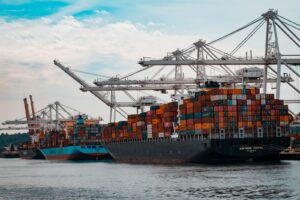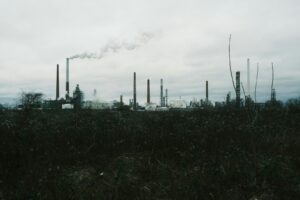A new ‘national conversation’ on how space is organised and utilised, and the country’s obsession with productivity and growth, are signs of a coming storm.
Late January, Downing Street launched a new consultation on strategic approaches to managing land in England. The goal is to empower decision makers to make better choices about how to prioritise agricultural land. As with anything, data represents the key ammunition in the future armoury.
The Land Use Framework, we’ve been told, will involve ‘the most sophisticated land use data ever published’. The kind of vast, in-depth, granular research needed to start working out how to organise room on a relatively small island nation that currently has some big demands. 1.5million new homes in five years. Rapid net zero transition involving vast industrial and energy investments.
There’s another huge factor in all this, though – agriculture, and the food production and security it looks to deliver. In the wake of Covid-19, the supply chain ripple effect and the fallout of the Ukraine war, a country’s ability to access enough sustenance to feed its population has become a major policy stress point. The safest option, of course, is to ramp up domestic production and rely less on imports.
But this implies a significant increase in how much land is being used for farming. According to the Government’s own Agriculture in the UK Evidence Pack, the total area currently dedicated to cultivating food is 17.2million hectares, which is around 71% of the total space available.
One approach would be to use this space more efficiently. The Climate Change Committee’s sixth Carbon Budget, published last week, suggests that net zero could require around one-third fewer sheep and cows in the country’s fields. This would start to bring down agricultural emissions, roughly 11% of the total national output. A figure that will rise exponentially as other, easier-to-decarbonise industries begin to cut greenhouse gas contributions.
This may not be particularly controversial, and demand alone could soon warrant a livestock reduction. Meat and dairy consumption is falling in Britain, a trend that accelerated in 2020 but began a lot longer ago. For 2050 emissions targets to be achievable, we need to eat 35% less high polluting foodstuffs like beef, cheese and milk. In their wake, land would be refocused on growing more vegetables alongside so-called ‘energy crops’ – those needed to produce low carbon and natural fuels.
At the same time, woodland coverage needs to increase from 13% of Britain to 19% within the next quarter of a century to help sequester carbon and promote nature recovery. That’s more than 1million hectares compared with today. This adds pressure to think strategically about what we plant or build, and where.
But the ‘conversation’ threatens to turn into a row if we continue to silo and separate these different needs in the name of a low emission, low carbon future. A net zero era that seems more distant than it has for a decade.
‘Changes in how we use land are an inevitable part of the net zero journey. Land use change is a critical factor in many of the recommendations from the Climate Change Committee, from land take for energy generation to shifts in the way we farm and use our landscapes to store carbon,’ says Roger Mortlock, CPRE chief executive.
‘On our small island, land supply is finite. Joining up different plans for how we use it is critical. Too many land-use shifts in the name of net zero are currently bargain-basement options that don’t take the public on the journey and have led to infrastructure being delivered in the wrong places,’ he continues. ‘Involving people much earlier in process, avoiding some of the divisive language that pitches the road to net zero and the public against each other, and taking a more joined-up approach to land use will be vital.’
Mortlock is hardly alone in this view. Emma Toovey, Chief Land and Nature Officer at Environment Bank, also agrees it is imperative to focus on land use that addresses myriad problems through bi-and-unilateral solutions.
Our historically rigid land management approach, invoking a city building simulation game – industrial here, agricultural here, residential or commercial there – is no longer fit for purpose, and risks creating deep rifts between stakeholders at a time when unity is vital for progress, but in short supply.
‘The natural environment, agriculture, and urban development don’t need to be seen as competing priorities. In fact, it’s possible – and essential – to find ways to address them all in harmony,’ says Toovey. ‘Farmers, landowners, and developers can achieve the best of both worlds, balancing the needs for productive land use with ecological restoration and biodiversity by adopting a more integrated and systemic approach.
‘We are encouraged by the government’s national consultation on land use, which presents a valuable opportunity for organisations like Environment Bank to contribute to the national dialogue and help shape policies that benefit both people and nature,’ she continues. ‘Working alongside landowners, we can ensure sustainable agricultural practices are maintained alongside restoration of essential ecosystems.’
You can find the Government Land Use Framework consultation here.
Image: Spencer Scott Pugh
More features:


















